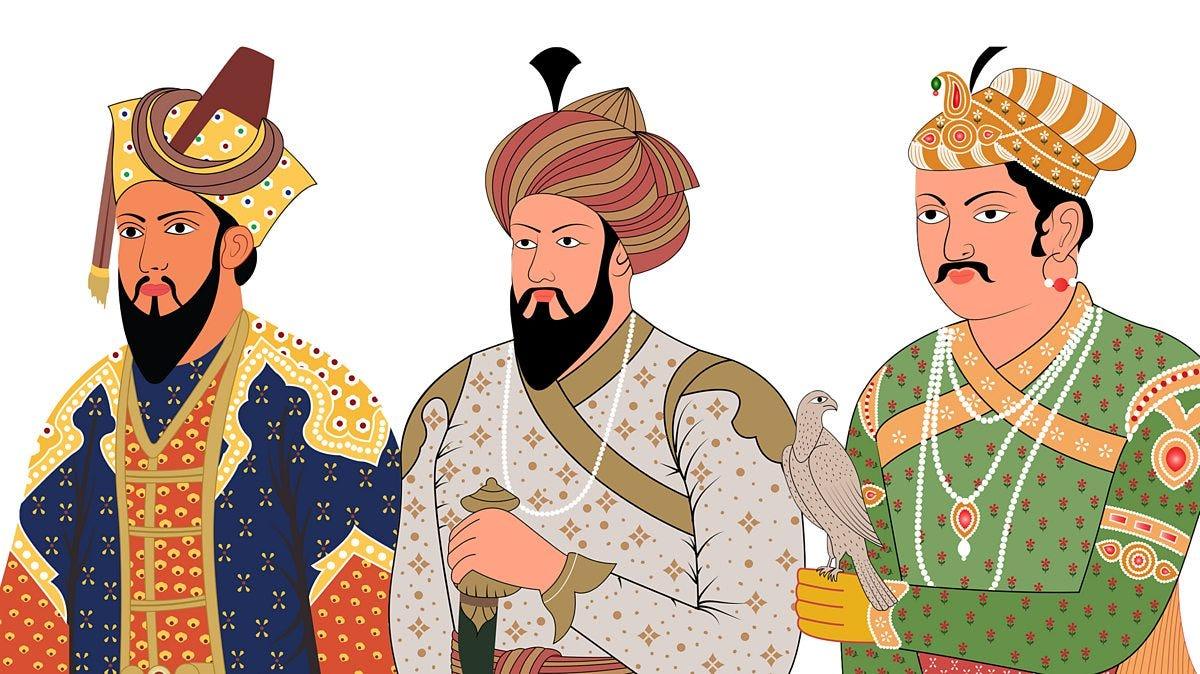
The Rise of the Mughal Empire and Its Legacy in South Asia
The Mughal Empire, a dynasty that reigned over much of the Indian subcontinent for over three centuries, remains one of the most significant and influential empires in South Asian history. Its legacy is indelibly etched into the region’s political landscape, cultural fabric, and architectural marvels. Founded by Babur, a charismatic Central Asian ruler, in 1526, the empire’s rise, zenith, and eventual decline offer a compelling narrative of military prowess, political maneuvering, cultural synthesis, and ultimately, the impact of colonialism. This exploration delves into the multifaceted aspects of the Mughal Empire, examining its origins, its golden age under Akbar, its artistic and architectural achievements, its gradual decline, and the lasting impact it continues to have on modern South Asia.
I. The Foundations of Power: Babur and the Conquest of India
The Mughal Empire’s origins lie in Central Asia, specifically with Babur, a Timurid prince descended from both Timur (Tamerlane) and Genghis Khan. This lineage imbued him with a powerful military tradition and a strategic mind. However, Babur’s claim to the throne of Fergana was constantly challenged, leading him to seek fortune and power elsewhere. His ambitious gaze fell upon India, a land rich in resources and ripe for conquest.
Babur’s initial expeditions into India met with mixed success, but his strategic brilliance and relentless determination ultimately proved decisive. His innovative use of artillery, a relatively new weapon in the region, significantly tipped the balance of power. The Battle of Panipat in 1526, against the Sultan of Delhi, Ibrahim Lodi, marked a turning point. Lodi’s forces, though numerically superior, were outmaneuvered and defeated, solidifying Babur’s claim to Delhi and establishing the foundation for the Mughal Empire.
Babur’s military success wasn’t solely attributed to superior weaponry. His understanding of terrain and his adaptability allowed him to overcome the challenges of conquering and controlling a vast and diverse land. He implemented effective administrative structures, gradually consolidating his power and laying the groundwork for future Mughal expansion. His memoirs, the Baburnama, provide invaluable insight into his personality, strategies, and the challenges he faced in establishing his empire. The Baburnama, written in Chagatai Turkic, is not only a military chronicle but also a significant literary work, reflecting the rich cultural heritage of the Timurids. His patronage of arts and letters attracted scholars and artists to his court, fostering a vibrant intellectual environment even during the early, formative years of the empire.
II. The Reign of Akbar: Consolidation and the Zenith of Mughal Power
The empire truly flourished under Akbar, Babur’s grandson, who reigned from 1556 to 1605. Akbar’s reign is widely considered the golden age of the Mughal Empire. He inherited a kingdom still consolidating its power, facing challenges from rebellious Rajput princes and internal dissent. However, Akbar’s diplomatic skills, military acumen, and progressive policies transformed the empire into a powerful and stable entity.
Akbar embarked on a series of military campaigns that significantly expanded the Mughal empire’s territory. He subjugated Rajputana through a combination of military force and shrewd diplomacy, forging alliances with several Rajput rulers and integrating them into his administration. This strategy brought stability to the empire’s western frontiers and access to crucial resources. His conquests extended eastwards, solidifying the Mughal dominance over much of the Indian subcontinent.
Beyond military victories, Akbar’s genius lay in his administrative reforms. He established a highly centralized administrative structure, dividing the empire into provinces (subahs) governed by appointed officials (subahdars). This system ensured efficient governance and collection of taxes, bolstering the empire’s economic strength. The mansabdari system, a ranking system based on military and administrative capabilities, effectively organized and utilized the empire’s vast resources. This system created a meritocratic structure to some degree, allowing for mobility based on capability rather than purely lineage.
Akbar’s policies towards religious tolerance were revolutionary for their time. He abolished the jizya tax, a discriminatory tax levied on non-Muslims, and initiated a policy of religious syncretism, exemplified by his creation of Din-i Ilahi, a blend of various religious beliefs. While the intent and ultimate success of Din-i Ilahi are debated by historians, it undeniably reflected Akbar’s belief in religious harmony and his willingness to engage with different faiths. This approach fostered religious tolerance within the empire, attracting people of various religious backgrounds and further strengthening the empire’s social and political fabric.
Akbar’s court was a hub of intellectual and artistic activity. He patronized scholars, artists, and architects, leading to a flourishing of Persian and Indian art, literature, and architecture. This period saw the development of unique styles of Mughal miniature painting, calligraphy, and architecture that blended Persian, Central Asian, and Indian artistic traditions.
III. The Architectural Legacy: A Synthesis of Styles
The Mughal architectural legacy is perhaps the most visible testament to the empire’s enduring impact. The Mughal style blended Persian, Central Asian, and Indian architectural elements, creating a unique and majestic aesthetic. This architectural fusion is seen in numerous structures across India, transforming the urban landscape and leaving behind awe-inspiring monuments.
The Taj Mahal, arguably the most iconic Mughal structure, stands as a breathtaking symbol of love and architectural genius. Commissioned by Shah Jahan, Akbar’s great-grandson, in memory of his wife Mumtaz Mahal, the Taj Mahal represents the pinnacle of Mughal architectural artistry. Its intricate designs, precise symmetry, and use of precious materials showcase the empire’s mastery of craftsmanship. The Red Fort in Delhi, another masterpiece, served as the Mughal emperors’ principal residence. Its towering walls, majestic gates, and intricate courtyards reflect both military strength and imperial grandeur. Numerous mosques, palaces, gardens, and tombs across the subcontinent similarly illustrate the empire’s architectural prowess and its ability to synthesize various artistic traditions. These structures remain important tourist destinations and powerful reminders of the Mughal Empire’s cultural impact.
IV. The Later Mughals: Decline and the Rise of European Influence
The reign of Aurangzeb, Akbar’s great-grandson, who ruled from 1658 to 1707, is often cited as a turning point in the empire’s history. While he expanded the empire’s territorial reach, his policies, characterized by religious conservatism and a harsh approach to governance, alienated many segments of the population. His revocation of the religious tolerance policies of Akbar, including the reinstatement of the jizya tax, led to widespread unrest and rebellion, weakening the empire from within.
The later Mughal emperors lacked the vision and administrative ability of their predecessors. Succession disputes, internal conflicts, and corruption eroded the empire’s power and authority. Meanwhile, the rise of the British East India Company in the 17th and 18th centuries presented a significant external threat. The British, initially engaged in trade, gradually expanded their political influence through military alliances, economic manipulation, and ultimately, outright conquest.
The decline of the Mughal Empire was a gradual process, characterized by a series of internal and external pressures. The Maratha Confederacy, a powerful regional power, challenged Mughal dominance, leading to protracted conflicts that further drained the empire’s resources. The rise of regional kingdoms and the weakening of central authority contributed to the empire’s fragmentation. By the mid-18th century, the Mughal Empire was significantly diminished, having lost control over vast swathes of territory and reduced to a symbolic entity under the watchful eye of the expanding British East India Company.
V. The Enduring Legacy: A Tapestry Woven Through Time
Despite its eventual demise, the Mughal Empire left an indelible mark on South Asia. Its architectural marvels, literary achievements, and administrative systems continue to influence the region. The Taj Mahal, Red Fort, Jama Masjid, and numerous other structures stand as timeless testaments to Mughal artistry and ingenuity. Mughal miniature paintings, calligraphy, and textiles remain highly valued works of art, influencing artistic trends even today. The cultural fusion promoted by the Mughals resulted in the development of new art forms, literary styles, and culinary traditions, significantly enriching the cultural landscape of the Indian subcontinent. The Urdu language, a blend of Persian, Arabic, and local Indian languages, emerged during the Mughal period and became a major language of South Asia.
The Mughal administrative legacy, while having its flaws, introduced aspects of centralized governance and bureaucratic structures that influenced subsequent Indian political systems. The land revenue systems, though often exploitative, provided a foundation for future revenue administration. Elements of the Mughal legal system also left their mark. The impact of the Mughal Empire extended far beyond its political and administrative structures. The empire’s syncretic approach to culture, particularly in art and architecture, significantly shaped the artistic and aesthetic sensibilities of the region.
The Mughal Empire’s fall marked the beginning of British colonial rule, but the Mughal legacy persists. The empire’s cultural contributions, artistic achievements, and administrative structures continue to resonate, demonstrating the enduring impact of a civilization that blended diverse cultures and left an undeniable mark on South Asia. The story of the Mughal Empire is a compelling narrative of conquest, consolidation, cultural synthesis, and ultimately, decline. However, its lasting influence on South Asian politics, culture, and art showcases the profound and enduring nature of its legacy. The grand monuments and cultural expressions of the Mughal era remain powerful reminders of a once-mighty empire and its significant contribution to the fabric of modern South Asia.


